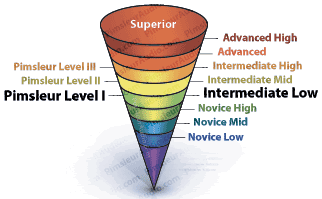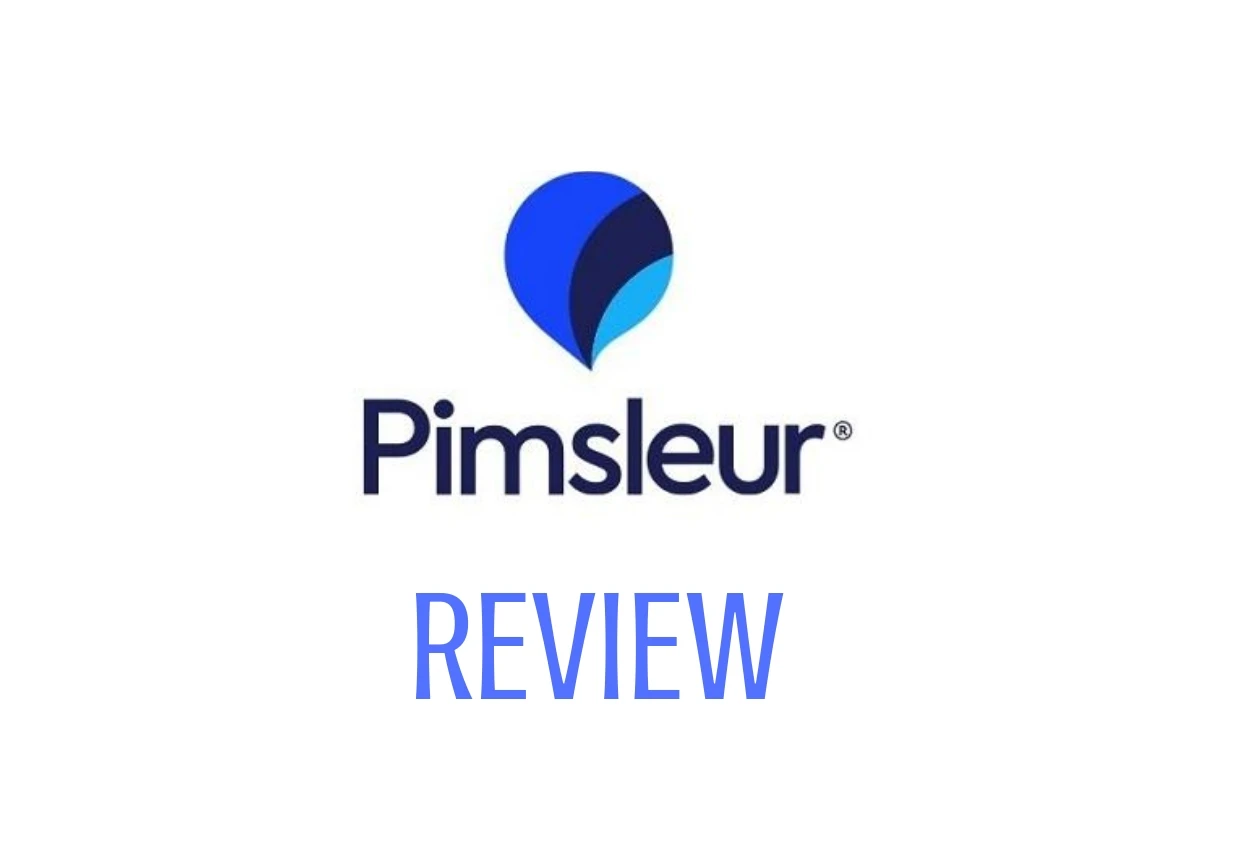- Best LinkedIn Learning Courses (Lynda Courses) - March 31, 2020
- EdX vs Coursera: Which is the Better Online Platform? - March 24, 2020
- Best Online Bookkeeping Courses Worth Taking - March 24, 2020
There’s no doubt about: technology is continually affecting to way we learn and interact, and nowhere is that more evident than with virtual language learning platforms like Pimsleur.
These platforms have completely affected the way and who can learn languages around the world. And there are no signs of this movement slowing.
And now, an unlike partnership is bridging traditional and innovative learning. Simon and Schuster, a subsidy of CBS, is one of the most well known and one of the older publishing houses, established in 1924. By 2016, the company was publishing 2,000 titles under a myriad of imprints per year.
But the bookseller, like all other booksellers, has had to adapt to changes in readership and market trends, by, for instance, investing in e-books and promoting authors in virtual spaces. And the powerful giant also happens to be in partnership with language learning platform Pimsleur.
Also known as Simon and Schuster Pimsleur Comprehensive, the language platform has allowed one of the most reputable booksellers to dip further into both technological and educational spheres, and has been compared to competitors such as Rosetta Stone and Duolingo.
Why online language platforms are only the beginning
Online language platforms, such as Pimsleur, are not likely a trend to fade anytime soon. If anything, this method of virtual learning, partnered with expert lesson plans and drawing some aspects from more traditional classroom learning, is only on the cusp of a wide and growing community of virtual and international students and teachers.
Online digital platforms are not just a trend in education, but are likely to continue to inundate other areas of commerce and consumerism, notably businesses who continue to offer remote positions, or who communicate with others around the globe in increasingly digitizalized platforms. The rise of ‘digital ecosystems’ allows users to interact and become fully immersed in ways not possible in the past.
And as formats become more advanced, there’s the possibility for richer ways of learning that never before would have been possible outside of face to face meetings. And that is evident in just how much learning has shifted online. While the norm is still traditional classes or face to face meetings, especially for regular schooling and likely for language learning, more and more students are opting to go online. Within a year, from 2015 to 2016, there was a marked five percent increase in students enrolling in online courses, as reported by U.S. News
And just last year, New York University Dispatch reported at length on the shift to comprehensive online ways of learning, mentioning driving factors such as:
- Less to Spend: Even though the economy itself has mostly recovered, the economic recession of 2008, as well as technological advances, drove demand for more accessible and affordable ways of learning.
- Increased Demand for Specialization: More and more jobs are becoming increasingly specialized, the need for specialized skills makes online learning more in demand. That’s because with different options to learn, both credit and non-credit based allow students to select what they want to learn with far more flexibility than some traditional curriculums.
- Increased Cost of Learning: Tuition at traditional colleges and universities has continued to rise above the rate of inflation, and even those seeking non degree or certificate programs may shy away from traditional tutors or tutoring services, who can charge quite a bit per hour. An online language learning platform like Pimsleur is a much more affordable option.
- Technological Revolution: The modern “technological revolution” has propelled advancements that make e-learning not only more accessible but also more productive.
- Accessibility Worldwide: Language platforms, especially those that include apps for learning, are more accessible to poorer individuals and individuals who do not own a functioning computer, as is the case in many regions of nations like Guatemala.
Can you learn a language online? Or Digitally?

Benefits aside, how effective learning a language online is?
That depends on a number of factors, all of which Anna Codrea-Rado of The Guardian examines.
She first argues that online learning, especially for languages, has, without doubt, its immediate benefits: learning a new language sometimes is not just a plus, but a necessity, especially for anyone who has emigrated to a country with a language that they are unfamiliar with. Being able to learn a language online is affordable where otherwise it might be prohibitive because of costs.
She also argues that learning online has a number of other benefits, including increasing personalization and adaptive lessons.
Nonetheless, there are a few traits that would be helpful to your success and consideration in learning a language online with a platform such as Pimsleur:
- The ability to work independently and understand learning needs
- The time to commit
- The ability to stay organized, adhere to deadlines and schedule your own coursework or learning time
- The desire to learn
- The ability to continue to learn after the course.
While many learning platforms do offer something that is meant to mimic immersion, the best way to learn a new language is to constantly work to apply it, especially conversationally. Asking for this, and also pursuing it on your own if at all possible will help you maintain your gains.
Pimsleur, in other words, is as good as you make it. If you’re willing, able, and comfortable with learning on an online platform, Pimsleur should at least be on your radar. We’ll take a look at why–and why not–you should consider: Pimsleur in our brief but comprehensive review.
How was Pimsleur Started and Why Does it Matter?
Pimsleur, as we’ve mentioned, is an online platform for learning new languages, and it’s partnered with Simon and Schuster. Pimsleur Language Programs actually had a very long history, unlike many online companies.
Rather than a startup, like so many of its competitors, Pimsleur as a company actually dates back to 1963, when it was founded by Dr. Paul Pimsleur, a professor of applied linguistics who taught at prominent universities, such as the University of California, Ohio State University, and The State University of New York at Albany.
It was his research on language acquisition and multilinguistic that served as the foundation for the Pimsleur Language Learning System and informed comprehensive ways of teaching students. His expertise on language learning aptitude helped inform the way languages were taught at the institute, as well as how to help students meet their full potential.
Though Dr. Pimsleur initially had limited success in marketing the program, he eventually succeeded in releasing comprehensive language courses as cassette tapes. In 1995, well after Dr. Pimsleur’s death, Simon and Schuster began distributing audio courses through bookstores. And in 2005, the company began to offer digital programs, in increasing different languages for a wider and more diverse group of students.
All of this matters because it shows just how much research, though, and firm grasp in educational training Pimsleur programs have, In fact, this is very hard to find with digital learning programs.
What do Customers and Experts Say about Pimsleur?
 Customer reviews are one of the next things you want to consider when deciding whether or not to learn with a company. Pimsleur was listed as one of Consumer Advocate’s Top 19 Language Learning Software Companies; in fact, while it is not clear if they were purposely ranked this way, it came it as number two on their list. The 30-day risk-free trial, the number of different languages offered, and the organization of courses and lessons were the top reasons for praise.
Customer reviews are one of the next things you want to consider when deciding whether or not to learn with a company. Pimsleur was listed as one of Consumer Advocate’s Top 19 Language Learning Software Companies; in fact, while it is not clear if they were purposely ranked this way, it came it as number two on their list. The 30-day risk-free trial, the number of different languages offered, and the organization of courses and lessons were the top reasons for praise.
Language 101 offered a slightly more tepid if still favorable review. Rated as a “good” way to learn a language, the review said that Pimsleur was an effective and affordable option, especially for beginners, stating that though it was not as innovative as some programs, that students still will “always learn something”.
The highest praise was for Pimsleur’s use of spaced repetition, a proven way to learn new material more effectively. It was also praised because as a purely audio program, it’s accessible for blind learners or learners on the go. The biggest downsides were that is was not as interesting, inventive, or immersive as other programs.
While there is not a ton in the way of customer and other expert reviews, it seems like Pimsleur is considered effective, is not overly exciting, way to start learning a new language.
What Languages Does Pimsleur Offer?
Pimsleur offers about 50 core languages, which is a little more limited than competing programs but still includes the most spoken languages, such as Mandarin Chinese, Arabic (several forms), Spanish, Portuguese, French, and German.
You can request a new language, and there’s ample ESL resources for native speakers of Spanish, Mandarin Chinese, Russian, Italian, Portuguese, Arabic, French, Haitian, German, and more. In fact, it is one of the few amongst its main competitors that offer a depth of ESL resources.
How many lessons, and how you purchase lesson sets, does vary depending on the language.
What is Learning at Pimsleur Modeled After?

While technically it’s lumped with online language platforms, it would be better to simply label it as a digital one. In fact, though more innovative than face to face learning, Pimsleur has a strong foothold in more traditional and tried and true methods.
As informed by expert and researched methods for language acquisition, Pimsleur is more focused on precise methodology and less so on cutting edge technology or immersion. “Scientifically proven set[s] of principles” are used to acquire and use a new language. While most of its competitors draw attention to technological features and online platforms, the language program draws attention to a methodology of four facets:
- Graduated Interval Recall: The use of optimal spacing between concepts to commit best for both long and short-term memory.
- A principle of Anticipation: Accelerating learning through connecting to the brain’s natural affinity for predicting and responding.
- Core Vocabulary: A researched and set a number of terms at once allows students to not become overwhelmed with too much at a given time.
- Organic Learning: Items are provided not isolation, but embedded within conversations in order to help improve learning and retention.
How Does Learning at Pimsleur Work?
Pimsleur provides learning software for the language of your choice. Mostly learning is done through learning applications, which makes it a slightly different format than other competitors; while other competitors do offer apps, Pimsleur, for the most part, functions primarily on applications.
The audio driven lessons are divided and well organized by language, categories, and language level. Repetition directed recall, vocabulary, and conversational skills are the main focus, so it seems to be very much more helpful for speaking, as opposed to verbal comprehension skills for learning a new language.
If you’re an auditory learner, and also if you’re constantly on the go. However, unlike the audio tapes in the past, now Pimsleur offers new ways to learn that are more engaging and a great asset for visual learners, meant to supplement the core auditory lessons, such as:
- Reading Lessons
- Role Play Conversations and Transcripts for Conversation Practice
- Digital Flashcards
- Skill Badges for Completed Lessons
- Speed Round Games for Better Retention
- Streaming or Downloads so you can go offline
The versatility and multidimensional design show how, despite sticking to its core roots, Pimsleur has adapted to the digital age. One of the neatest features is “Lightbulb Moments,” which helps students learn about the culture.
How Much Does Pimsleur Cost?

Pimsleur costs different amounts depending on what sort of language lesson packs you decide on.
You search for a language by country and then can browse what language lessons are offered. Then you’ll be directed to different purchasing options. Each level is based on skill and is meant to be completed by progression, though it’s up to you what you purchase.
For most, you’ll purchase a small section of lessons at a time, though you can also purchase a larger bundle for a deeper discount. For lesser-known languages, you usually purchase just a few lessons at a time, while more prominent languages, such as French, for example, tend to come in larger packages.
It’s hard to pinpoint just how much lessons cost, in part because they are so variable. But here are some examples:
Learn French Premium, all levels, for $150 each–this includes 16 hours worth or a total of 30 lessons.
Latin American Spanish comes in a bundle of all five lessons, or 80 hours worth, for a total of $575.00
While this may seem to cost more than other programs, do consider how many hours of lessons you’re getting. You also pay in part for the expert proven methods, and as you can see, different languages really do have a different price tag. Larger bundles do tend to save you, but for less popular languages, smaller lesson sets allow you to try something with a little less commitment. And you won’t be paying additional commission fees, as you would with some competing digital learning companies.
You also have the option for a free 30 day lesson trial, so you can see if you like Pimsleur before fully committing. You can also sign up for special offers or take advantage of their referral program, where you get $20 in credit for every friend you refer.
What Payment Methods does Pimsleur Offer?
Pimsleur offers a variety of payment methods, like most digital language companies. Major credit cards, including Visa, Discover, Mastercard, and American Express are accepted, and there is no surcharge. For physical properties only, physical cash and checks are accepted as well.
There’s also the option to pay a little at a time, through their Flexi Pay Installment Option:
- 0% APR and no interest plans
- Installment plan with equally distributed monthly payments
- Shipping and tax charges, if applicable, will be evenly charged to each payment
- Generally in three payments:
- 1st payment, due upon purchase, ⅓ cost
- 2nd payment, after 30 days, ⅓ cost
- 3rd and final payment, due 60 days after purchase (final ⅓ cost)
What About their Return Policy?
Pimsleur offers a return policy with some stipulations. For one, digital downloads cannot be returned; only physical CD’s maybe. Physical CD’s may be returned provided:
- The package is unopened and returned in the same condition
- Includes a packaging invoice
- Customers are responsible for shipping costs
- Must be received within 90 days
Overall, is Pimsleur a Good Way to Learn?
If something is clear from our review of Pimsleur, it’s that this is a very established company, with a long record of teaching students through research and expert methodology.
Pimsleur, despite remaining a bit more traditional than its competitors, also manages to integrate features to help you not only learn, but apply your new language skills.
Bottom Line: The prices run a little higher, and it may not be as cutting edge as some competing options. But it’s a well-established company, and with years of serving customers, something that, if it meets your learning style and commitment, is hard to argue with. Plus, it’s a great option for anyone, for whatever reason, not sold on the digital learning method and want to purchase physical audio lessons.

